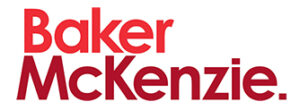Like many US financial innovations exported worldwide, special purpose acquisition companies (SPACs) have garnered a mix of enthusiasm from companies and investors, and caution from regulators in Asia. For Asian companies looking to de-SPAC in US markets, the authors have compiled a set of lessons learned to allow businesses to maximise the odds of success in using this innovative deal structure.
Have a clear thesis in mind. Many companies seem to jump on financial innovations to make quick returns. For much of 2019 and 2020, SPACs had that flavour. Going public at a guaranteed valuation with no revenue track record seemed too good to be true. Unfortunately, it was.

Partner at Baker McKenzie in
San Francisco
T: + 1 415 984 3841
E: derek.liu@bakermckenzie.com
As a category, de-SPAC companies had significantly lower returns than traditional IPO companies. Many companies that went to the market on the basis of their projections saw dramatic drops when those projections hit inevitable road bumps. To make matters worse, redemption rates for the amount in trust – the funds raised in the SPAC’s IPO – remain stubbornly high, while private investment in public equity (PIPE) financings have become significantly more challenging.
So, for all the negative headwinds, why de-SPAC? For starters, early stage companies seeking to access lower cost of capital in the US market have few alternatives. Traditional IPOs are still not receptive to earlier stage companies that are seeking to market based on projections.
Another driver is that partnering with a well-connected SPAC sponsor can give companies a leg-up on capital markets expertise – something particularly valuable for APAC-based companies. Finally, the guaranteed funding or valuation is still there, in the right situation, all of which leads to a second observation.
Not all sponsors are equal. With 650 or so SPACs in the market, a “public-company ready” late-stage target has no shortage of suitors. How, then, does one select the right SPAC?
- First, expertise in the right industry or geography. The sponsor will take up seats on your board and has an outsized role in any PIPE or subsequent financing activities. Finding someone who can “translate” your APAC-centric story to a US audience is a significant asset. The right sponsor can also help you professionalise and grow your business as you take in more capital.
- Second, access to capital. Many sponsors are also private equity or venture capital firms that can deploy their proprietary capital to support the de-SPAC. Finding a firm that can backstop redemptions or commit PIPE capital not only de-risks the de-SPAC transaction but is a powerful signal to the US market of support.
- Third, alignment of interests. Sponsors get a significant amount of “free” equity, whether the deal succeeds or fails. Look for sponsors that can show their conviction by putting more capital (including their promote) at risk.

Partner at Baker McKenzie in New York
T: + 1 212 626 4456
E: michelle.heisner@bakermckenzie.com
It is not all about valuation. Since nearly all de-SPACs are fundraising events, the valuation should be thought of as the pre-money valuation offered by the SPAC. However, as SPAC funds are subject to redemption, the SPAC cannot generally guarantee funding at that negotiated valuation. Trading below the offer price is frequently taken to be a negative signal to the market, making future fundraising more challenging, so it is better to select a reasonable valuation that will generate sustained investor interest, including in the PIPE and public trading, rather than aggressively negotiating to maximise a headline valuation.
It is all about the PIPE. With redemptions running at high percentages, any funds raised in the SPAC’s IPO should be considered at-risk capital. Even if sponsors offer up a minimum cash closing condition, that closing condition only comes into play late in the process, when it is generally painful to terminate due to sunk costs and market perceptions. The only “safe” capital is the funding raised in the PIPE transaction that usually accompanies the announcement of the de-SPAC transaction and is not subject to redemption. In the current market, PIPE fundraising has become more challenging. Financial investors looking to profit from the de-SPAC “pop” have left the market and/or have their money tied up in existing investments. Companies must now market to longer-term investors. That trend is broadly positive, as investors are likely to stay and support the stock for longer. But it does mean that companies should budget more time pre-announcement to have conversations with potential PIPE investors.

Partner at Baker McKenzie in Hong Kong
T: + 852 2846 1718
E: derek.poon@bakermckenzie.com
While the authors have worked on transactions where the PIPE marketing has taken place post-transaction announcement, we have seen the challenge of such an approach, notably that post-announcement trading activity (if lower than par) will significantly depress investor appetite.
Be public company ready. SPACs have rightly been marketed as a faster way to go public, but faster does not mean skipping any steps. Companies will still need two or three years of Public Company Accounting Oversight Board-audited (PCAOB) financial statements to go public, and will still need adequate internal controls to be able to give required Sarbanes-Oxley compliance certifications.
As an APAC-based company listing in the US, be prepared to face enhanced scrutiny around related party transactions, anti-corruption or anti-money laundering procedures, and financial controls from US regulators and investors. Selecting board members with US public company experience is valuable in building out accounting, legal and investor relations functions. While the temptation exists to outsource everything to accounting and law firms, having the capabilities in-house will save money in the long run and result in greater coherence.
Projections. For many SPACs, forward-looking projections are crucial since historic financials may not justify their desired valuation and anticipated growth. The US Securities and Exchange Commission has expressed significant ambivalence regarding the use of projections in de-SPACs, but has not yet prohibited them.
For a de-SPACing company, the risk from projections is quite simple: What happens if they are not met? Projections go towards management credibility. The negative coverage associated with failing to meet projections is often worse than accepting a lower valuation in the first instance.
Further, investors who lose significant value when projections are reset are primed to cause trouble in the form of shareholder litigation. When using projections, ensure they build on realistic assumptions, with significant buffers built in to account for inevitable delays and underperformance.

Partner at Baker McKenzie in Singapore
T: + 65 6434 2684
E: ashok.lalwani@
bakermckenzie.com
Transaction fees. Going public is inherently an expensive proposition. A de-SPAC comes with visible and invisible fees. On the visible side, issuers should expect to pay underwriting fees from the initial IPO, legal fees for two sets of counsel, investment banking fees for de-SPAC advisory services, and accounting fees. But it is the dilution built into the de-SPAC structure itself that is the highest hidden cost.
Most prominent is the sponsor promote, which typically amounts to free equity worth 20% of the SPAC’s IPO capitalisation. Following the promote are warrants, which are generally exercisable at 15% above the SPAC issuance price of USD10 per share (or USD11.50). These warrants provide a ready source of additional capital. However, they also serve as a relatively sizable overhang on the public stock, and can amount to anywhere between 25% to 50% of the SPAC’s original capitalisation, which is not reduced by redemptions. As the PIPE financing situation becomes more challenging, investors increasingly ask for structured instruments such as convertible debt, which come with their own set of economic downsides.
Avoiding litigation. Perhaps nothing epitomises the US public markets more than shareholder litigation. The single-largest source of risk for de-SPACs is so-called disclosure claims (i.e. allegations that the target company made misrepresentations regarding the state of its business in public disclosures). Because of the common use of forward-looking projections in de-SPAC marketing, the inherent risk that those projections are not met becomes a built-in source of litigation risk. Another common source risk is that the SPAC sponsors, given their incentive to close a deal or lose their investment, are not sufficiently careful in conducting due diligence on the target.
Be flexible. SPACs are a fast-changing space. Singapore Exchange launched an initiative to entice SPAC listings in September, and at the time of writing, Hong Kong were actively considering allowing SPAC listings. US regulators are also actively reviewing the structure. Changes in regulations concerned with foreign investment and even international political tensions can make some de-SPACs more challenging.
Choosing the right advisers. Because SPACs are such a new instrument in the region, many local adviser teams have never directly worked on a de-SPAC transaction. It is not uncommon – and generally beneficial – for advisers to work in cross-border teams between the home country and the US. The local team can leverage the greater expertise of US practitioners in de-SPAC transactions while still providing on-the-ground local knowledge.

300 East Randolph Street, Suite 5000
Chicago, IL 60601 US
Tel: +1 312 861 8000

























